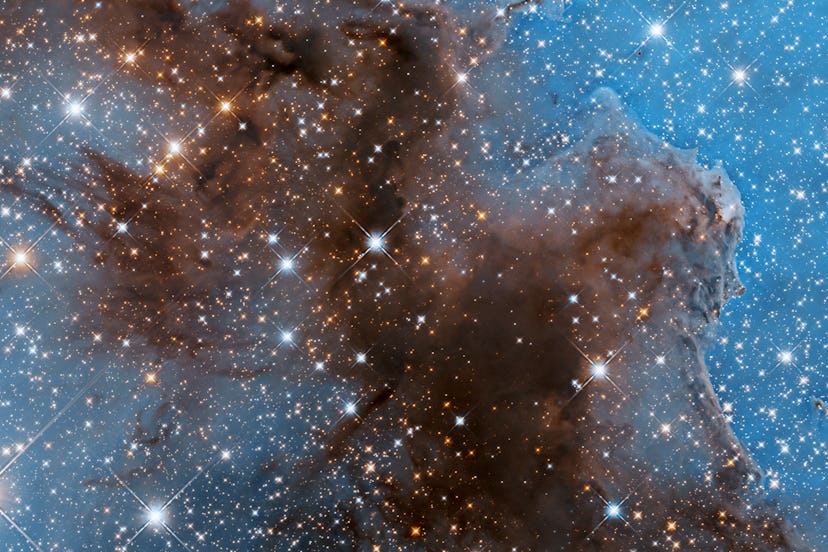This Hubble Telescope Photo Is A Stunning New Look At An Old Favorite
NASA recently released another look at one of our favorite space scenes, and it’s just as stunning as the looks we’ve seen before.

We’ve been really spoiled this year when it comes to new images from space. Between the Hubble Space Telescope and the brand spankin’ new James Webb Space Telescope (JWST), star enthusiasts have had their share of breathtaking images captured for the first time from locations we’ve never heard of, and new looks at old favorites. NASA’s Hubble recently got another look at one of our favorites, and the photo shows a nebula that is astoundingly stunning.
In mid-December, the space agency released another image of the Carina Nebula. It’s no surprise that this area is the Hubble Space Telescope’s most-imaged object because it’s quite beautiful. And the new look does not disappoint.
Can you explain what we see in this photo like we’re five years old?
This isn’t our first time getting a glimpse at the Carina Nebula, which is in the southern Carina constellation, which is approximately 7,500 light-years from Earth. This area of space is one we’ve known about for a long time, too, first discovered in 1752 in the Cape of Good Hope in South Africa, NASA explains, since it’s visible with the unaided eye if you’re in Earth’s southern hemisphere.
This new image is just a small section of this incredible space area, technically known as NGC 3372. The full size of this area is approximately 300 light-years, so scientists can only study it in small sections.
But what exactly are we looking at? Simply put, it’s “an enormous cloud of gas and dust,” NASA shares, and it’s “home to several massive and bright stars, including at least a dozen that are 50 to 100 times the mass of our Sun.”
And yes, it does actually glow like the picture shows. NASA explains that because there is intense radiation from the stars in the area, it ionizes the gas, which creates the glow. There is always a lot going on in this area, given how many stars are present, and it’s often bursting with the formation of new stars and dying stars as well.
“As stars form and produce ultraviolet radiation...stellar winds disperse the gas and dust around them, sometimes forming dark, dusty cloaks and sometimes creating empty patches for the stars to become clearly visible,” NASA says.
Scientists were able to take this image of the Carina Nebula thanks to the infrared light imaging capabilities of the Hubble Telescope. This tool allows for longer wavelengths of light to be detected, producing incredible images like this.
This isn’t the first time NASA has shared new images of this area this year. NASA released a gorgeous look at the Carina Nebula using tools on the JWST and has transformed image data into music for a whole new way to experience the beauty of the stars.